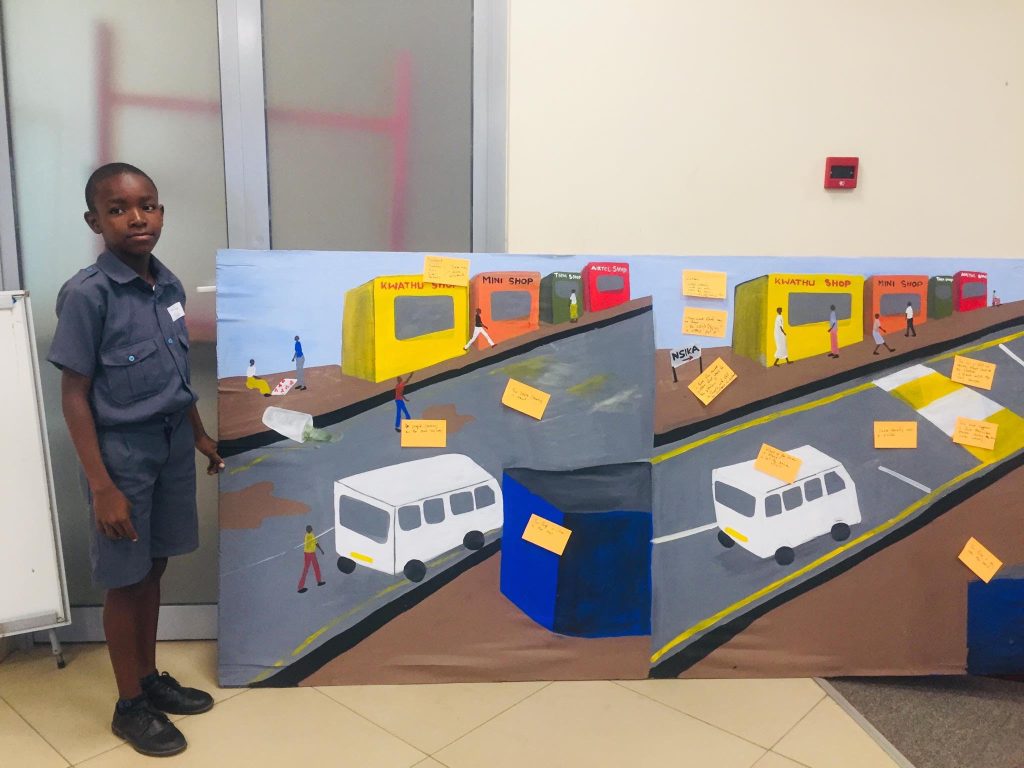Children demand safe roads
From Monday to Friday, Mwandisa Ng’omba, 12, leaves home around 6am and walks over five kilometres to get to school in time for her first class.
The trip can be mazy and tricky as she and her peers zig-zag past clustered settlements split by busy roads where they perilously dodge speeding vehicles.

What should be a routine walk has become a dangerous date with destiny as children navigate chaotic traffic on the accident-prone streets where traffic regulations seldom apply.
Despite frequent sights of traffic police ostensibly enforcing traffic laws regulations on the roads of Malawi, children say the possible accidents pose a grave danger to their lives, education and dreams.
Researchers gave learners in 10 primary schools near high-speed roads in Blantyre some pencils, crayons and paper to map the challenges they meet on the roads and suggest the possible solutions.
The drawings show that the children have a voice and they want adults, especially road users and policymakers, to stop doing business as if young lives do not matter.
In their art for road safety, the children mentioned speeding, lack of road signs and faded road markings as neglected hazards that lie in wait during their school trips.
The drawings constitute disturbing snapshots of children that are learning dangerously, especially in schools that are perilously close to high-speed roads—a call to establish pedestrian crossings, traffic lights, road markings and speed bumps.
Esther Banda, a mother of three, is worried by sights of children darting through fast-moving traffic on Kenyatta Drive on the way to Kanjedza Primary School.
“I fear for my children every day,” she says. “Vehicles speed without regard for pedestrians.”
Last year, Blantyre recorded over 150 accidents involving schoolchildren.
According to the Directory of Road Traffic and Safety Services (DRTSS), most of these accidents are preventable.
“We need better infrastructure, stronger enforcement and more public education,” says DRTSS transport officer Henry Matsoka.
Teachers and school administrators are equally worried.
Absalom Pius, a teacher at Chichiri Primary School, recalls a speeding minibus that veered off the road, nearly hitting a pupil.
Pius states: “We don’t have pedestrian crossings and speed bumps near our school. We’ve contacted the city council, but action has been slow,” he states.
Mwandisa is concerned that vehicles rarely stop for them.
“I wish we had traffic officers near our school to stop vehicles and teach us how to use the roads safely,” she says.
Road safety experts say improving road infrastructure and educating communities could dramatically reduce accidents.
They advise that simple measures such as pedestrian crossings, speed bumps and warning signs near schools could save lives.
DRTSS and its partners conduct school outreach meetings to give children road safety tips, including how to cross roads safely.
Chitetezo Project trains children to safely navigate roadways and propose their own solutions.
Chitetezo Project programmes manager Lusizi Kambalame says children should be part of decision-making.
“We want them to be involved,” she says. “Their insights are key to finding sustainable and effective solutions.”
Using art to understand road safety gaps has proved a game changer.
“It’s simple and engaging,” says Kambalame. “We trained and asked learners to identify and address challenges they face on roadways. Through artistic presentations, children highlight small details often overlooked by policymakers.”
According to the World Health Organisation, accidents claim 5 700 lives on the roads of Malawi and children are among the most vulnerable road users.
The global public health organisation says African children are twice more likely to die in road accidents than their peers overseas.
In her perception study on the everyday risks faced by school-going children, Linda Chokotho recommended urgent intervention to improve road conditions and safety.
Road safety campaigner Julia Nyangu says the government has the duty to make roads safer for all, including schoolchildren.
“We need to treat this as an urgent issue. Every child deserves to go to school without the fear of being hit by a car.”
Kambalame says as cities expand, authorities must correspondingly raise their ambition and commitment to protecting their youngest citizens.
“Without swift and decisive action from authorities, promising lives and dreams risk being lost on the very streets meant to lead them to a brighter future,” she warns.





